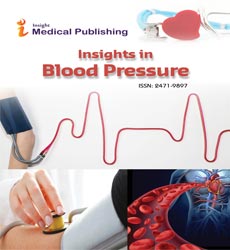Abstract
To Compare the Effect of Polyethylene Glycol vs. Lactulose in the Treatment of Overt Hepatic Encephalopathy
Introduction: Hepatic Encephalopathy is one of the
most common causes of hospitalization for cirrhotic
patients. Lactulose has long been used as the
standard therapy for the treatment of acute HE.
This study evaluated the efficacy of PEG as
compared with lactulose for the initial treatment of
HE. Aims and Objective: To compare efficacy of
PEG 3350 electrolyte solution over lactulose in
patients admitted for hepatic encephalopathy. To
determine whether treatment with PEG will reduce
duration of hospital stay, and whether PEG can be
an effective additional treatment option for HE.
Material and methods: This prospective,
randomized, comparative study was conducted in
the Department of Gastroenterology Medical Trust
hospital, Kochi–Kerala India, over a period of two
year from May 2015–April 2017 following its
approval by the Institutional ethical committee. 50
patients with cirrhosis and altered mental status
attributed to HE were randomized to a standard
lactulose protocol or a PEG protocol (25 in each
group). Interventions: Patients in the PEG group
(n=25) received 2 L of PEG orally or via NG tube
as a single dose over 4 hours. Patients in the
lactulose group (n=25) received 20-30 g lactulose
orally or via NG tube for 3 or more doses over 24
hours, or a single dose of 200 g lactulose via rectal
tube. Grade of HE was determined prior to
treatment and again at 24 hours using the Hepatic
Encephalopathy Scoring Algorithm (HESA). After
24 hours, all patients received lactulose per the
standard of care. Main outcomes and measures: The
primary end point was an improvement of 1 or
more in HE grade at 24 hours, determined using the
Hepatic Encephalopathy Scoring Algorithm
(HESA), ranging from 0 (normal clinical and
neuropsychological assessments) to 4 (coma).
Secondary outcomes included time to HE
resolution and overall length of stay. Results: In our
study, the gender distribution among two study
groups showed a male predominant. Majority of
HE patients were found in age group of 55-64
years. The most common underlying etiology of
Liver Cirrhosis was Alcoholic liver disease 70%,
Cryptogenic 14%, followed by Hepatitis C. The
most common precipitant for Hepatic
encephalopathy was GI Bleeding, followed by
Constipation and Sepsis. The two groups were
comparable in terms of baseline laboratory
parameters. All patients were of Child Turcot Pugh
(CTP) class C, with a Mean MELD score of 19.08
± 2.23 in PEG group vs. 18.76 ± 2.36 in Lactulose
group (p-value=0.625, NS). Majority of the patients
were in grade 3 encephalopathy 58% (29/50),
followed by grade 2 in 32% (16/50) at the time of
presentation. A significant difference was seen
between two groups in terms of mean change in
grade of encephalopathy (HESA score) after 24
hours of therapy, with 1.00 ± 1.04 in PEG group
compared to 1.76 ± 0.87 in lactulose group, with a
significant p
Correspondence
to: Waseem Raja, Gastroenterologist, Department
of Gastroenterology, Medical Trust Hospital,
Kochi, Kerala, India, Tel: +91-7051001228; Email:
waseemgastro2015@gmail.com Received:
April 30, 2019, Accepted: May 10, 2019,
This work is partly presented at 15th World Hematology & Immunology Congress December 05-06, 2018 Lisbon,Portugal
Extended Abstract
Vol. 5, Iss.1
2019
Insights in Blood Pressure
Published: May 17, 2019 Citation: Raja W, Jan R,
Sebastian B, Mathai SK, Ashfaq (2019) To
Compare the Effect of Polyethylene Glycol vs.
Lactulose in the Treatment of Overt Hepatic
Encephalopathy. J HepatolGastroint Dis 5:166. doi:
10.35248/2475-3181.5.166 Copyright: © 2019 Raja
W, et al. This is an open-access article distributed
under the terms of the Creative Commons
Attribution License, which permits unrestricted use,
distribution, and reproduction in any medium,
provided the original author and source are
credited.
Hepatic Encephalopathy (HE) is a serious but
potentially reversible disorder with a wide spectrum
of neuropsychiatric abnormalities and motor
disturbances that range from mild alteration of
cognitive and motor function to coma and death It
is a challenging complication of advanced liver
disease and is estimated to occur in 30% to 45% of
patients with liver cirrhosis and in 10% – 50% of
patients with transjugular intrahepatic
portosystemic shunts HE is often a serious sequela
of chronic liver disease with significant morbidity,
mortality and healthcare costs. In the United States
HE accounts for 22,931 hospitalizations with an
average stay of 8.5 days and a total cost of $64,108
per case Lactulose (beta-1, 4-galactosido-fructose)
has been the standard of care for management of
Hepatic encephalopathy for decades . Lactulose is a
non-absorbable synthetic disaccharide that consists
of galactose and fructose linked by bond resistant to
lactase. Lactulose is not absorbed by the small
intestine but undergoes fermentation in the colon to
yield short chain fatty acid, carbon dioxide, and
hydrogen, with consequent lowering of fecal PH.
The mechanism of action of lactulose is
multifactorial and is postulated to be the trapping of
ammonium ions in the gut by organic acids released
after bacteria metabolize lactulose or the removal
of ammoniagenic organisms and/or replacement of
these species with acidophilic bacteria lacking
urease Others have suggested that inhibition of
intestinal glutamine uptake and subsequent
decreased ammonia genesis plays a role.
Polyethylene Glycol (PEG) is an iso-osmotic
Author(s):
Waseem Raja*¹, Rohey Jan² ,Benoy Sebastian¹ , Sunil K Mathai¹ and Ashfaq¹
Abstract | PDF
Share this

Google scholar citation report
Citations : 71
Insights in Blood Pressure received 71 citations as per google scholar report
Abstracted/Indexed in
- Google Scholar
- China National Knowledge Infrastructure (CNKI)
- Directory of Research Journal Indexing (DRJI)
- WorldCat
- Secret Search Engine Labs
Open Access Journals
- Aquaculture & Veterinary Science
- Chemistry & Chemical Sciences
- Clinical Sciences
- Engineering
- General Science
- Genetics & Molecular Biology
- Health Care & Nursing
- Immunology & Microbiology
- Materials Science
- Mathematics & Physics
- Medical Sciences
- Neurology & Psychiatry
- Oncology & Cancer Science
- Pharmaceutical Sciences
